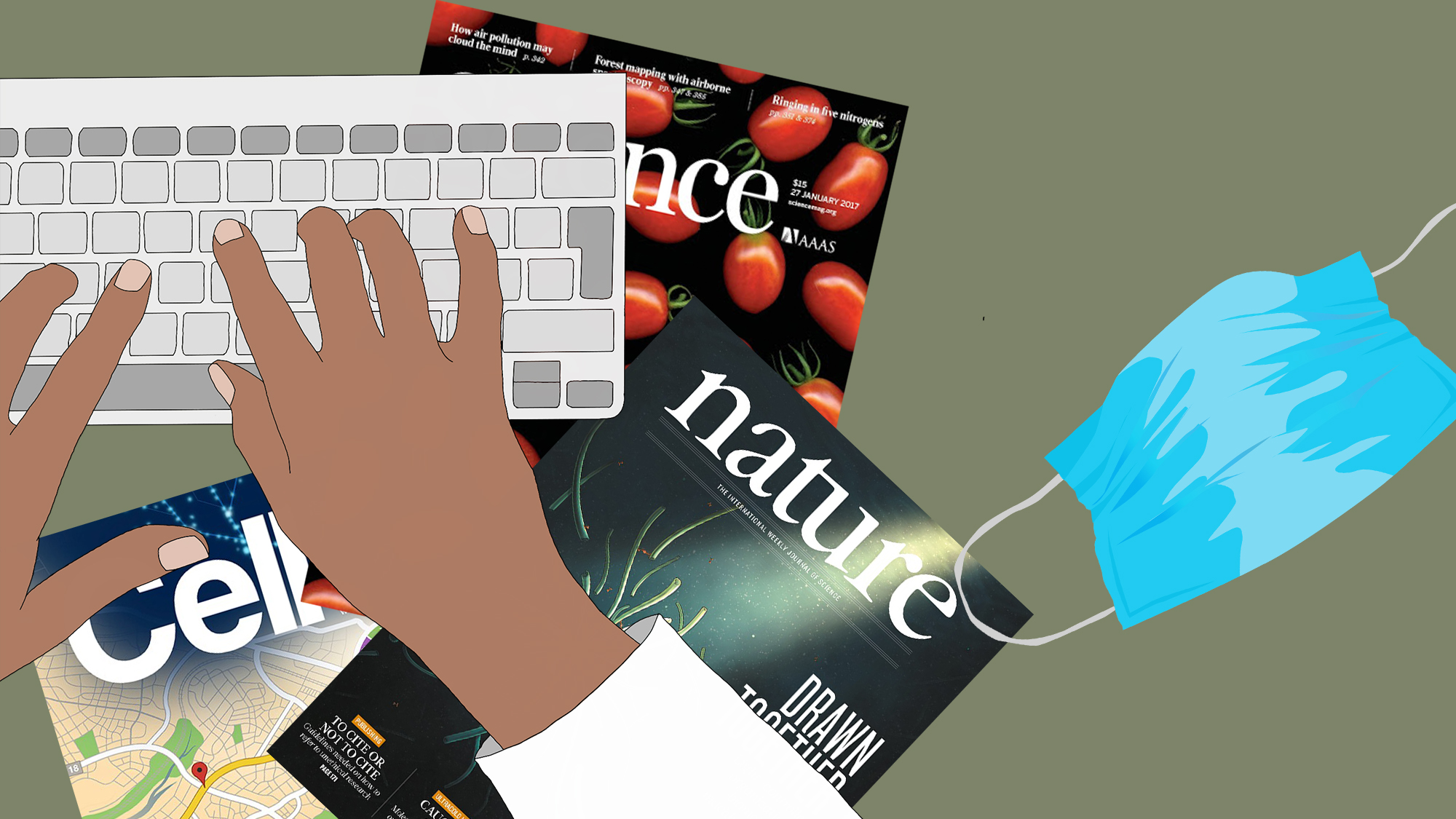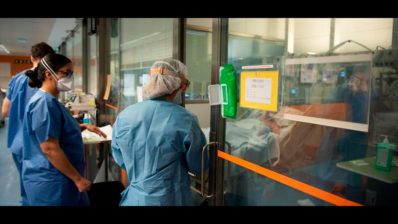The new coronavirus, Sars-Cov-2, has changed the scientific world. And I’m not talking only about the fact that many laboratories have redirected their research to this new threat, but also about the way science is done and communicated.
How research normally works
The usual scientific process takes time – a lot of time. You and your colleagues (because science is never done individually) have a hypothesis, think about and design some experiments, and, if you are lucky enough to get the money for it, start experimenting. This ‘experimenting’ can take anything from a few months to several years. And once you have the results you try to publish them in a scientific journal. This ‘publishing’ phase can also take, with the current publishing system, up to a year or more. And once it’s published – unless it has been published as an Open Access article – it can take another 6 months to a year before the article is available to everyone.
Many in the scientific community have been saying for years that this process is far from efficient. It is terribly slow, and although it is never a good idea to rush science, at least the communication step, once you have the results, could and should definitely be much, much quicker. The current coronavirus crisis has managed to achieve just that.
The current coronavirus crisis has managed to speed up the publication of scientific results like nothing before
Speedy research in times of crisis
With this invisible enemy spreading all over the world at such an unprecedented speed, the scientific community has stepped up to the challenge.
On the one hand, many publishers have expedited their review process as much as possible.
But many scientific advances related to the Sars-Cov-2 and Covid-19 are reaching their audiences even quicker. They are being posted as preprints. These are research articles that have not gone through the compulsory peer review that normally validates the results before they are officially published in a scientific journal. Publishing a preprint, therefore, allows the results to reach their audience much faster – it usually takes only 48h for the manuscript to be uploaded to the preprint server, after a quick superficial check but without full-on review by other scientists. And the audience reached is not just the rest of the scientific community but also journalists or even the general public. That is, of course, not without potential problems.
Preprints are research articles that have not gone through the peer review that normally validates the results before they are published in a scientific journal
Misinformation risks
Without the peer review control, and with anyone being able to access them, bad preprints may end up spreading misinformation, as happened with the “China-manufactured HIV-like virus conspiracy theory”. And misinformation and fake news about the coronavirus can spread even quicker than the virus itself.
This misinformation risk has led to some preprint servers, such as bioRxiv, raising the bar on what they allow to be uploaded. It has also led to the start of a campaign against health disinformation, which calls for big technological companies and social media to firmly address fake news and avoid their viral spread.
Navigating a sea of preprints
Other initiatives are popping up to help scientists, journalists and any interested reader, navigate the ever-growing sea of preprints about the coronavirus.
Taking into account it was an unknown virus just a few months ago, the new coronavirus has really made a splash. The first publications about it appeared in January, with just about a dozen articles by the end of the month. Now, we are seeing 2,000 articles every week on the topic.
To help keep up with this current knowledge, and to help curate the myriad of non-peer-reviewed articles, Nature and The Wellcome Trust have joined efforts to launch the “Outbreak Science Rapid PREreview”, a platform where any researcher can comment on preprints about Covid19 and other emergent diseases. This initiative meets the problem half way – Covid-19 results are quickly published as preprints, without prior review, but they are all collected in one same platform where hopefully as many scientists as possible can validate them.
ASAPBio, a scientist-driven non-profit that works to promote transparency and innovation in science communication, has also put together a very useful website, “Preprints and Rapid Communication of COVID-19 research”. This offers links to resources where not only you can find preprints for COVID-19, but also platforms for early communication and commenting of research and several initiatives towards openness that have arisen to support research progress in tackling this outbreak.
Another great resource for curated preprints in general, and which now has an updated section specifically related to Covid-19 is Prelights – you can watch an interview about this initiative in our earlier post on preprints.
LitCovid, from the NIH, is another source of Covid-19 information – the “most comprehensive curated literature hub for tracking up-to-date scientific information about the 2019 novel Coronavirus”, according to the site, which in this case tracks only peer reviewed articles.
Working with uncertainty
And despite all the efforts, many of the preprints and articles about Covid19 won’t stand the test of time. Science always deals with uncertainty, and even in the best conditions, articles are published that, in time, may turn out to be wrong.
In the current pandemic, our scientific knowledge about the coronavirus (how it is transmitted, how or whether it creates immunity) is changing on a daily basis. The unprecedented speed with which research is taking place and being publicised, makes it more likely for the general public to be bombarded with contradictory results, or advice that varies day in day out.
The information about the coronavirus in the media seems to be changing on a daily basis. But disagreements, debates and even contradictions are part of the scientific process, which we are now witnessing live.
Although, to the lay person, this might seem unsettling, these contradictions, disagreements or debates are actually part of the scientific process. The difference is that normally they happen behind the curtains, and the general public only gets to hear about the final consensus. Today, we are for the first time observing the development and testing of scientific hypotheses as it happens; we are witnessing the process live.
There is still a lot we don’t know about the coronavirus, but every day we know a bit more. And although the truth is never absolute, and even less so in uncertain times like the current ones, science is the only way to get closer to it.







